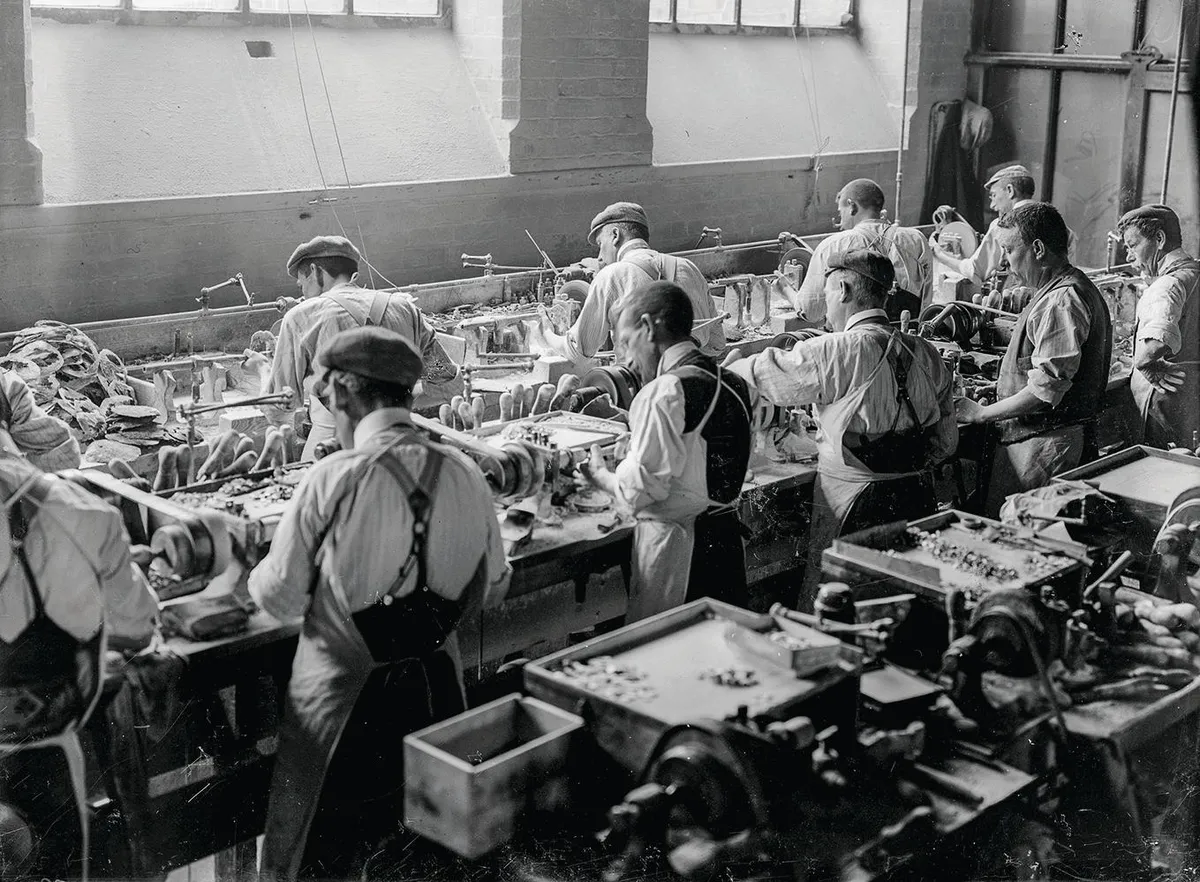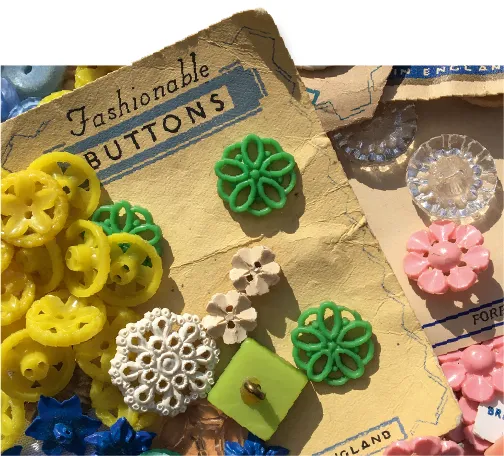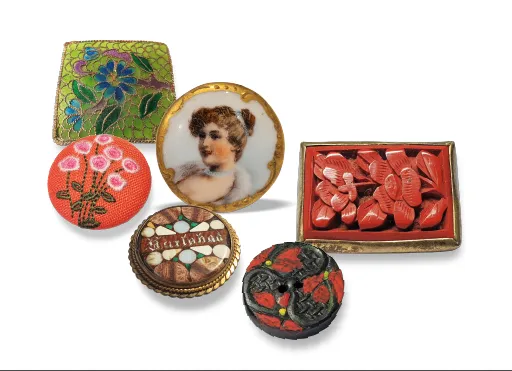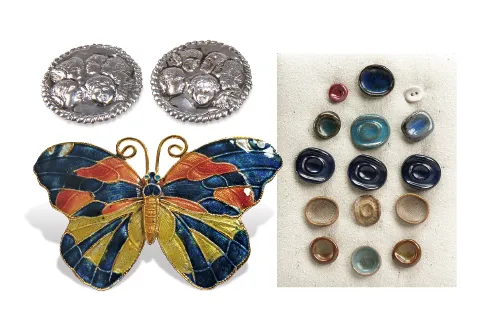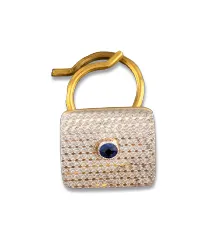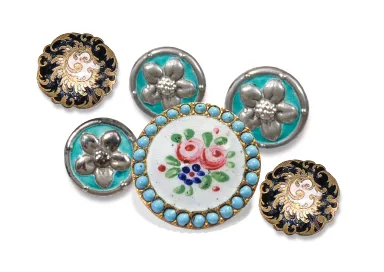‘Buttons sort of grow on you,’ says Maureen Needham, a button collector and member of The British Button Society. ‘I started with a shoe box, then I filled that, so I moved to a boot box, and now I have a big plastic box. I’m still going!’
Buttons have been an important part of fashionable costume for hundreds of years, to aid a snug fit or for eye-catching embellishment. Across the centuries, buttons have been made in a seemingly infinite variety of shapes and styles, and using diverse materials, from practical substances like horn or wood, to valuable jade, gold or gems.
While button collecting is booming, the use of buttons in contemporary garment making has fallen into decline, reflects Maureen: ‘Nowadays, clothes tend to be designed for practicality and comfort, so they use lots of elastic, Velcro and zips. It’s rare for buttons to be a feature – they tend to be mass produced overseas in cheap nylon or polyester, designed to withstand washing machines and aggressive detergents.
In years past, people would remove precious buttons before a garment was washed. Or they would transfer a good set of buttons to a new piece of clothing. Of course, a lot of historical buttons were very mundane, and designed to be purely functional, but others were really flamboyant, or like little works of art.’
Britain was once a great button-making nation, with Birmingham at its centre. In the early 1800s, there were more than 100 button workshops in the Birmingham area, with a flourishing trade in mother-of-pearl buttons. But Britain was not alone in making buttons.
One of the things Maureen finds especially appealing about collecting buttons is that they’ve been produced by cultures all over the world, from Japanese Satsumas decorated by hand with tiny paintings, to vibrant Czech glass buttons, or delicate French Limoges porcelain: ‘They also evoke different moments in history, like the micromosaic buttons brought back from the Grand Tour, or buttons made for Victorian mourning dress, as well as important design trends.’
Buttons can give us interesting insights into Britain’s social history. Military uniforms are still resplendent with brass or other metal buttons, but in the past all kinds of bus, tram, train and shipping companies also commissioned their own buttons. Even miners’ associations and civic organisations like local councils designed distinctive metal buttons, making a statement about regional identity and pride.
For many British button collectors, the holy grail is work by Lucie Rie, who is better known for her innovative studio pottery. When she first came to the UK in 1938 she found work with glassblower Fritz Lampl, and made buttons for his company, Bimini. She later set up on her own and made ceramic buttons for retailers like Liberty. It’s said her experimental recipes for interesting finishes influenced the glazing for which she later became famous as a potter.
Collectors are keen on the Lucie Rie buttons marked on the back with a tiny tree of life, as that was Lampl’s Bimini mark, and shows it’s an early design. Lucie Rie buttons can make serious money – a single button, 3cm in diameter with the tree mark on the reverse sold in February for £1,275.
Where to buy antique buttons
Although very rare buttons sell for hundreds of pounds, it’s also possible to find interesting buttons for significantly less, especially if you’re patient and willing to search through old button stashes.
Collector James Elliott loves to go button hunting at junk shops, antiques markets and car boot sales, and pays between £5 and £7 for a tin weighing around 3 pounds: ‘I like the fact that somebody has spent years collecting these tiny objects. I get such enjoyment from sorting through a bag or tin and coming across antique ones; it’s like finding treasure! It’s a dirty job – your fingers will be filthy afterwards – but it’s all part of the fun.’
Sarah White, who heads the textiles and costume department at Tennants, says she usually finds buttons in antique sewing boxes, or in mixed lots of haberdashery or sewing accessories. Buyers should also look out for buttons in jewellery or militaria sales.
At auction, Sarah says a case of silver and enamel Art Nouveau buttons is likely to make £100 to £150 – several times more if it’s a set retailed by Liberty. Prices also tend to be pushed higher when there’s a crossover with another field buyers are passionate about – whether it’s country sports or Suffragette history.
